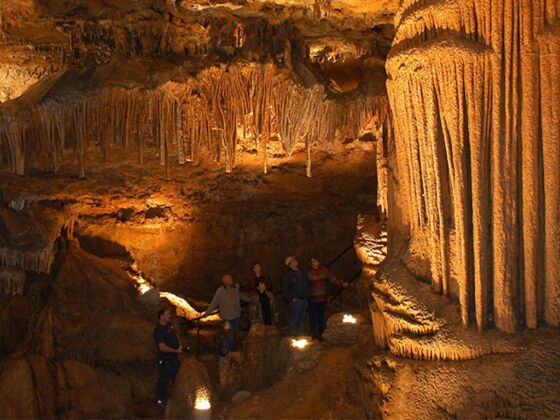Getting Started: Touring a Commercial Cavern
For those who have never ventured underground and don’t know how they will react to small spaces or dark areas, a commercial cavern tour might be a good way to start. Commercial caverns usually give guided tours along well-lit pathways and do not require visitors to demonstrate any prior caving experience.
